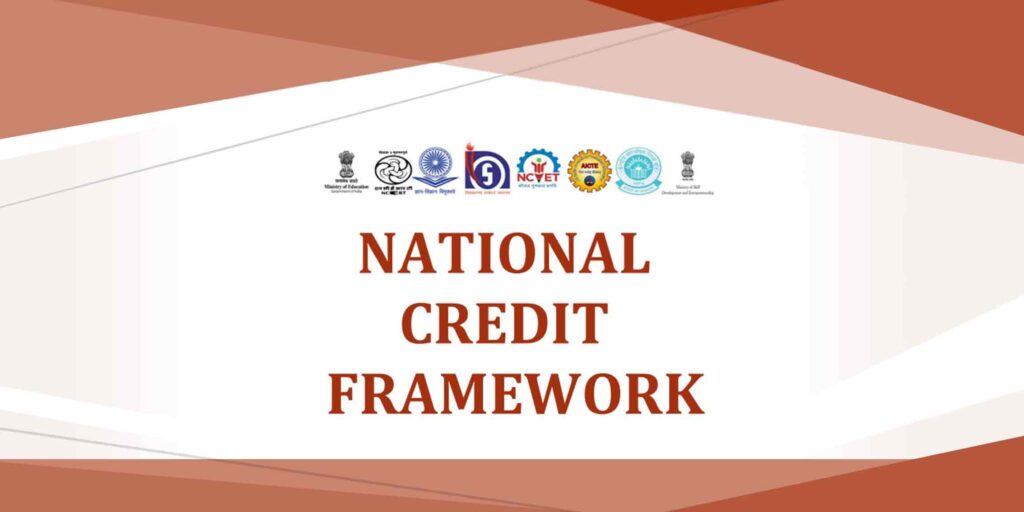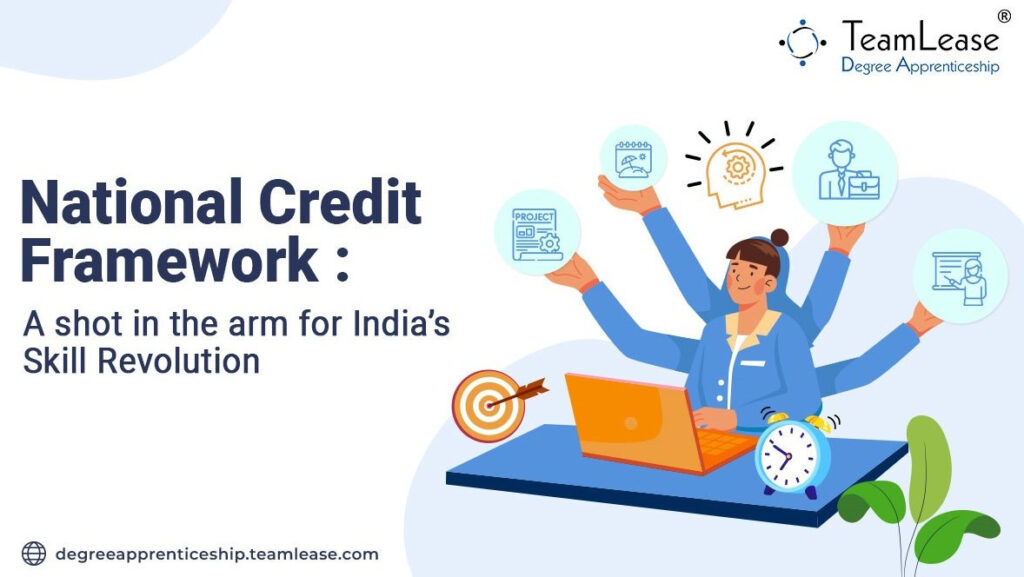The academic panorama in India is on the verge of a good sized transformation, pushed via the National Education Policy (NEP) 2020 and the introduction of the National Credit Framework (NCrF). These reforms goal to create a greater inclusive, flexible, and holistic training system that meets the wishes of a unexpectedly changing global. The National Credit Framework, mainly, serves as a transformative framework designed to integrate vocational schooling with educational pursuits, thereby getting ready students for the needs of the 21st century.

Table of Contents
Understanding the National Credit Framework (NCrF)
The National Credit Framework is a complete structure that enables a unified machine for amassing and moving credit throughout diverse instructional streams, which include better training, vocational education, and skill training. It recognizes that getting to know happens in multiple contexts and extends beyond traditional classroom guidance. By providing a bendy and inclusive framework, the National Credit Framework seeks to house numerous mastering reports, permitting students to have interaction in diverse activities even as earning academic credits.

Key Features of the National Credit Framework
- Flexibility in Learning: One of the center standards of the National Credit Framework is flexibility. Students are recommended to earn credits no longer just via traditional lecture room gaining knowledge of but additionally through numerous activities, which include research tasks, internships, sports, network service, and artistic endeavors. This broadens the scope of mastering and enables college students to explore their pursuits whilst obtaining valuable abilties. For example, a pupil concerned in a theater manufacturing can earn credits for their participation, recognizing the significance of creative expression along instructional achievement.
- Unified Credit System: The National Credit Framework introduces a unified credit rating device that permits for the seamless accumulation and transfer of credit score at some stage in precise instructional streams. This manner that scholars can integrate educational coursework with vocational training or different experiential getting to know possibilities, main to a extra included academic revel in. For instance, a pupil pursuing a diploma in engineering can also participate in an internship at a tech organization, earning credit score for each their coursework and realistic enjoy. This integration fosters a comprehensive facts of the difficulty count quantity and prepares college students for real-world demanding situations.
- Focus on Skill Development: In nowadays’s activity market, the call for for practical capabilities is more suggested than ever. The National Credit Framework emphasizes integrating ability-primarily based publications into better education, making sure that scholars collect the abilities essential for their future careers. By mixing theoretical information with sensible talents, the National Credit Framework prepares graduates to satisfy enterprise expectancies. For instance, college students in a business software might find out about advertising and marketing theories even as concurrently growing abilties in digital advertising via fingers-on initiatives. This twin cognizance enhances employability and equips graduates to navigate a competitive process panorama.
- Holistic Assessment: The National Credit Framework carries a comprehensive evaluation gadget that evaluates college students based on their overall performance across numerous sports. This holistic approach guarantees that credit allocation displays tangible achievements, encouraging students to have interaction actively in numerous stories. For example, a scholar who excels in a network carrier task, sports, and academic studies can earn credits for all these endeavors, selling a well-rounded educational profile. This assessment model now not only motivates students but also fosters a feel of responsibility and possession over their learning.
The Context of NEP 2020
The National Credit Framework is part of the wider vision articulated inside the National Education Policy (NEP) 2020. The NEP ambitions to convert education in India by means of moving far from traditional, inflexible structures toward a extra bendy, included system. It seeks to create a holistic instructional environment that nurtures creativity, important thinking, and hassle-fixing competencies—traits which are vital in nowadays’s globalized world.
The NEP emphasizes the importance of multi-disciplinary training, advocating for the mixing of vocational and academic gaining knowledge of. This method acknowledges that understanding is not siloed but interconnected, and students gain from publicity to various fields. By fostering interdisciplinary collaboration, the NEP objectives to create a greater inclusive and adaptable workforce.
Addressing Concerns and Resistance
While the National Credit Framework gives numerous advantages, there are challenges and worries concerning its implementation. Some educators and stakeholders are proof against those changes, viewing them as radical or useless. This resistance can be attributed to numerous elements:
Fear of Change: Long-hooked up practices in training can be difficult to regulate. Many educators may additionally feel unprepared to conform to new frameworks, fearing that they lack the necessary abilties or know-how to put in force the NCrF successfully.
Perceived Quality Issues: Critics may worry that a focus on flexibility and diverse getting to know reviews should dilute the fine of training. There is a situation that prioritizing abilities over theoretical know-how may cause a much less rigorous instructional environment.
Institutional Readiness: Not all higher training establishments are equally geared up to implement the NCrF successfully. Disparities in resources, infrastructure, and schooling can restrict the successful adoption of the framework, specifically in less developed areas.
To cope with these worries, it’s miles essential for policymakers and academic leaders to have interaction in significant communicate with stakeholders. Providing education and help for educators, as well as showcasing successful case studies, can assist build self assurance in the new framework. Collaboration between establishments can also foster a shared understanding of quality practices for enforcing the NCrF.
- The Path Forward
- As higher schooling institutions begin to adopt the National Credit Framework, several techniques can enhance its effectiveness:
- Professional Development for Educators:Training packages need to be installed to equip educators with the talents and information had to implement the National Credit Framework. Workshops, seminars, and collaborative tasks can facilitate this transition, permitting educators to embrace revolutionary coaching methods and evaluation techniques. Ongoing expert improvement will help educators adapt to the evolving educational landscape and better aid their college students.
- Interdisciplinary Programs: Institutions need to encourage the improvement of interdisciplinary applications that align with the ideas of the NCrF. By promoting collaboration between unique departments, instructional institutions can create opportunities for college kids to interact in multifaceted mastering stories. For example, a program that mixes engineering, environmental technology, and enterprise can prepare students to tackle complicated troubles consisting of sustainability and renewable electricity.
- Partnerships with Industry: Collaborating with enterprise partners can ensure that the abilities taught align with market needs. Such partnerships can facilitate internships, apprenticeships, and palms-on training, imparting students with actual-world experience. Industry involvement in curriculum development can also help bridge the gap between academic learning and realistic application, making sure that scholars are nicely-prepared for the workforce.
- Monitoring and Evaluation: Continuous tracking and assessment of the National Credit Framework implementation can be crucial in identifying regions for improvement. Feedback from students, educators, and industry companions can assist refine the framework and decorate its effectiveness. Establishing mechanisms for assessing the effect of the NCrF on student getting to know results and employability could be important in making sure its long-term achievement.
Case Studies and Best Practices of National Credit Framework
- Examining a success implementations of the National Credit Framework can provide precious insights and inspire different establishments to undertake comparable processes. For example, positive universities in India have already all started to integrate interdisciplinary applications that align with the NCrF, demonstrating its potential benefits.
- Example of Interdisciplinary Learning: A main engineering institution partnered with a local enterprise incubator to create a application where college students from diverse disciplines, such as engineering, design, and enterprise, collaborate on startup projects. This initiative not only allows students to earn credits but additionally gives sensible revel in in entrepreneurship, fostering innovation and creativity.
- Community Engagement Projects: Another institution carried out a community carrier application where college students engage in neighborhood improvement projects. Students earn credits for their participation, and the program has brought about positive effects for each the community and the scholars, improving their social attention and civic obligation.
- Industry Collaborations: Several universities have set up partnerships with tech agencies to create internship programs that align with the NCrF. These collaborations allow students to benefit palms-on revel in even as earning credit, preparing them for a success careers in technology and innovation.
conclusion
The National Credit Framework (NCrF) is a groundbreaking initiative that has the capability to convert better education in India. By selling flexibility, multidisciplinary learning, and talent development, the NCrF pursuits to create a extra holistic educational environment that prepares college students for the complexities of the cutting-edge global. While challenges continue to be, the a success implementation of the NCrF can function India as a global leader in education, empowering college students to become adaptable, skilled specialists.
As establishments include this new framework, the imaginative and prescient of an inclusive and dynamic educational panorama becomes increasingly plausible. The NCrF now not best fosters private boom and improvement but additionally aligns with the wider dreams of the NEP, promoting a holistic approach to schooling that values both academic success and sensible enjoy.
By embracing the NCrF, India can pass closer to a future wherein education isn’t always just a way to an quit but a transformative journey that equips college students with the expertise, competencies, and values essential to thrive in an ever-evolving global. Through collaborative efforts, continuous assessment, and a dedication to innovation, the NCrF can pave the manner for a new generation in education, allowing India to become an financial powerhouse and technological leader on the global stage.